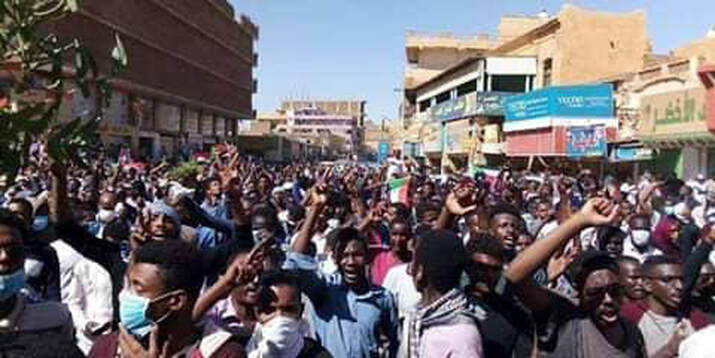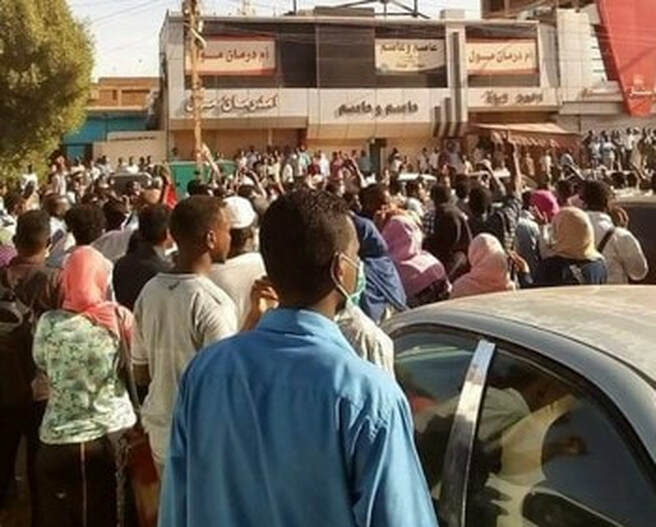|
Dr. Christopher Zambakari Founder & CEO, The Zambakari Advisory Hartley B. and Ruth B. Barker Endowed Rotary Peace Fellow Assistant Editor, Bulletin of The Sudan Studies Association 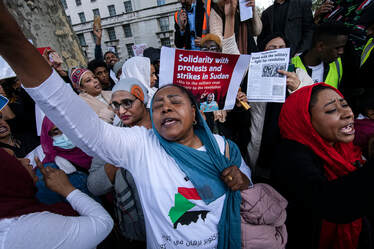 Credit: Koca Vehbi/Shutterstock Credit: Koca Vehbi/Shutterstock Sudan is a country in northeast Africa that has been marred by violence and conflict for several decades. The ongoing conflict in Sudan has resulted in countless deaths and displacement of millions of people. The conflict has also had a devastating impact on the country’s social and economic fabric, leaving the country in a state of turmoil. This article explores the social historical context of the conflict in Sudan, how it came to be, and what led to the violence. Also discussed is what the international community, United Nations, African Union, and Arab League can do to bring the violence to an end.
0 Comments
Nichola Mandil Ukeil South Sudan journalist, Instructor, Starford International University, South Sudan 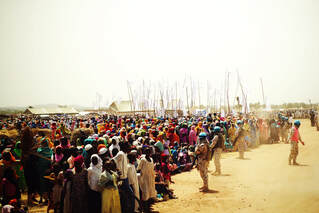 Credit: For Her/Shutterstock Credit: For Her/Shutterstock Conflict in Sudan? You may wonder which conflict, which war, which collision of arms and general butchery it is that has most recently caught the international community’s attention. The latest test of wills is a war not a month old and commanded by generals. Commanded by generals, in fact, who have been comrades in “arms and fate” for nearly four years since former Sudanese President Omar El-Bashir was ousted in 2019. Dr. Christopher Zambakari Founder & CEO, The Zambakari Advisory Hartley B. and Ruth B. Barker Endowed Rotary Peace Fellow Assistant Editor, Bulletin of The Sudan Studies Association 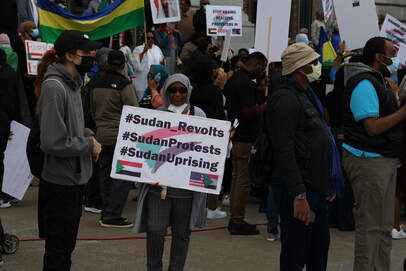 Sudan is in crisis. Again. Sudan is further tattered, further cleaved and mutilated. The third-largest country in Africa has been marred by political instability and violence for decades. The country has experienced multiple civil wars, military coups and political upheavals. Chaos and states of emergency are almost commonplace and millions of Sudanese people have been displaced. Poverty is widespread and political oppression is, again, the order – or disorder – across the country. Rose Jaji (PhD) University of Zimbabwe, Harare, Zimbabwe 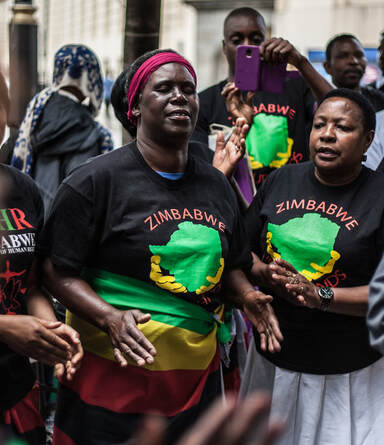 LONDON - JUNE 27TH, 2015: Unidentified woman at the "Zimvigil" protest outside the Zimbabwean Embassy protesting human rights violations by Robert Mugabe. Credit: Tom Brittney/ Shutterstock.com LONDON - JUNE 27TH, 2015: Unidentified woman at the "Zimvigil" protest outside the Zimbabwean Embassy protesting human rights violations by Robert Mugabe. Credit: Tom Brittney/ Shutterstock.com Women appear in much of the literature on violence as victims because violence is generally understood in terms that limit it to its direct or physical form, which is predominantly associated with men. The main result of masculinization of violence and its limitation to physical attack in the study of gender and violence is the pathologization of women, which obscures their political agency. Although women’s perpetration of direct violence is limited and largely unobtrusive relative to men in many conflict situations, women are conspicuous in perpetration of cultural violence, which Galtung (1990, 29) defines as “any aspect of culture that can be used to legitimize violence in its direct or structural form.” Cultural violence takes numerous forms that include art, science, ideology and language. Although it appears to be harmless, cultural violence justifies and legitimizes direct violence (Galtung 1990), and the two forms of violence are mutually constitutive. Cultural violence renders the idea of direct violence a palatable and appropriate response to perceived enemies identified through political ideology articulated through relevant language in Zimbabwean politics. The political discourse in Zimbabwe constitutes an integral component of cultural violence whose distinctive characteristics are name-calling and hate speech, which are exemplified by the depiction of political adversaries as puppets, traitors, and enemies who are a threat to the country and need to be “crushed.” Yasir Arman Deputy Chairman of the SPLM-N and Secretary for External Affairs for the Sudan Call. Sudan is facing multiple crises of nation-building, democratization, social justice, gender equality and the need for sustainable development. All these require a paradigm shift and structural changes on the basis of a blueprint that has sufficient national consensus and will eventually lead to building a modern state on equal citizenship.
The ongoing non-violent Sudanese revolution is the widest peaceful mass movement that Sudan has ever witnessed since its independence in 1956. It has involved rural and urban Sudan, women, youth, students, professionals, political parties and movements, civil society groups, and activists from all walks of life, including anti-dam and anti-land grabbing movements and others. It has also attracted, in a limited way, some Islamists from the new and older generations who are for change. Protests have continued for almost two months, which has provided Sudan’s political life with new blood, baptizing a new generation whose courage and abilities have re-energized the entire society and provided confidence that democratization and building a new Sudan is possible. Hashem Mekki Adjunct Language Professor at The Institute of World Politics Many politicians and ordinary citizens in the United States and other countries in the western hemisphere have been following the political turmoil and human rights violations against ordinary citizens in Venezuela. However, what many might not have heard of is that in Sudan, people have been oppressed and their civil liberties have been violated for half a century. The Republic of the Sudan, a country in Northeast Africa, where Islamic-oriented military regimes have dominated national politics since independence in the 1950s. Sudan is on the brink of a seismic political change as peaceful protesters march throughout its cities and the seat of power in the cosmopolitan capital Khartoum.
Professor Erik Reinert, Technology Governance and Development Strategies, Tallinn University of Technology ‘This tendency to Diminishing Returns was the cause of Abraham’s parting from Lot, and of most of the migrations of which history tells’ wrote the founder of neo-classical economics, Alfred Marshall, in the first edition of his textbook Principles of Economics(1890). In a footnote he refers to the Bible’s Genesis xiii : 6: ‘And the land was not able to bear them that they might dwell together; for their substance was great so they could not dwell together’. (Marshall 1890: 201). 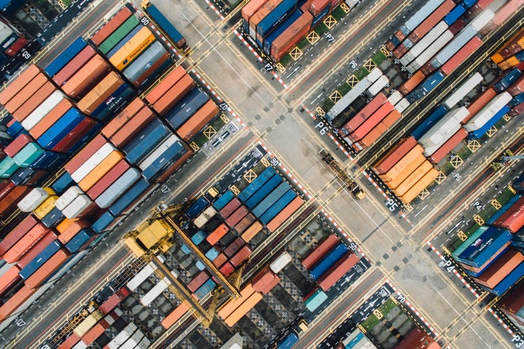 Marshall’s observation also applies to today’s migration patterns: from countries where most activities are subject to constant or diminishing returns to countries whose key economic activities are subject to increasing returns to scale. Diminishing returns occur when one factor of production is limited by nature, which means that it occurs in agriculture, mining, and fisheries. Normally the best land, the best ore, and the richest fishing grounds are exploited first, and – after a point – the more a country specialises in these activities, the poorer it gets. OECD (2018) shows how this occurs in Chilean copper mining: every ton of copper is produced with a higher cost than the previous ton. Rose Jaji (PhD), University of Zimbabwe, Harare, Zimbabwe 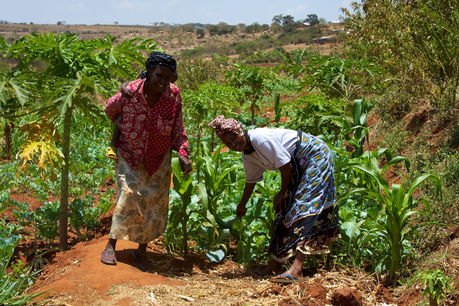 Smallholder farmers in Kenya. [Source: McKay Savage from London, UK (https://creativecommons.org/licenses/by/2.0)], via Wikimedia Commons] Smallholder farmers in Kenya. [Source: McKay Savage from London, UK (https://creativecommons.org/licenses/by/2.0)], via Wikimedia Commons] Researchers, whether their research sites fit into the classical home-field dichotomy or conflate home and the field, plan the field trip with the supposition that they will find research participants. What researchers may not have discussed on the numerous academic platforms available to them is the possibility of encountering a research-fatigued or research-weary community. Potential research participants may also have expectations of the research. But do researchers consider research from the perspective of research participants and what it means to tell one’s story and not see the relevance of the research to one’s life? Relevance of the research to research participants plays an important role in facilitating access (Coleman 1996). Some research participants may have participated in previous researches and may want to know why they should keep telling their stories. I address my experiences as I carried out research with farmers in an irrigation scheme in Zimbabwe and urban refugees in Kenya. Muhammad Dan Suleiman, University of Western Australia, Perth 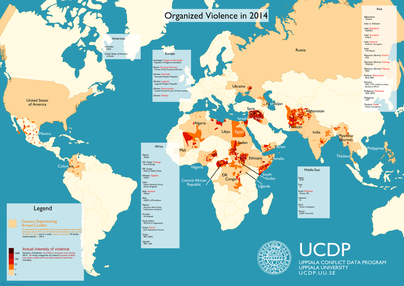 Introduction: In recent years, West Africa has come into the global spotlight due to the prevalence of famines, religious terrorism, anti-state rebellions, and arms, drugs and human trafficking. These developments are the product of both local and global dynamics and they remain substantial challenges for the region in 2017 and beyond. There have been positive developments, including an emerging consolidation of support for democratic transitions of power through both popular protests and elite-led regional diplomatic and military interventions against unconstitutional changes of government or attempted unlawful retentions of power. While there are positive developments, concerns have increased of late about insecurity in West Africa in an era of violent criminal and political movements operating across borders. Indeed, West Africa suffers from ethno-religious tensions, political instability, poverty and natural disasters. West Africa is a vast sub-region. Nevertheless, I offer below a highlight of key developments and events to watch in a few countries and locations in the sub-region, and the best way to address pressing issues. Kyle Anderson (MS), Data Analyst Research Aide, The Zambakari Advisory Richard Rivera (MA), Statistician & Psychometrician, The Zambakari Advisory Prior to its birth on July 9th, 2011, the area that is now South Sudan has faced instability, which can be seen as a result of its history of colonization that has, in turn, led to a legacy of instability and violence (Metelits, 2016). The current conflict in South Sudan can be thought of in terms of social, political, and economic factors. The Fragile States Index quantifies these factors, creating a composite score for each country. As of 2016, out of 178 countries that were studied, South Sudan was the second most fragile, only trailing Somalia (Fragile States Index, 2016).
This piece discusses two research questions investigating events within the five years following the birth of South Sudan: 1) What is the frequency and distribution of the interaction of actor type and event types for events in South Sudan from July 9th, 2011 to July 8th, 2016?, 2) What is the frequency and distribution of actor types within the different states in South Sudan from July 9th, 2011, to July 8th, 2016? |
Archives
October 2023
Categories
All
|
Copyright © 2023 The Zambakari Advisory - Privacy Policy
Our site uses cookies to improve your experience. You can control cookies by adjusting your browser or device settings.
If you continue without changing your settings, we assume that you are happy to receive all cookies.
If not, please feel free to opt out here.
SEO by Qasim Khilji
Our site uses cookies to improve your experience. You can control cookies by adjusting your browser or device settings.
If you continue without changing your settings, we assume that you are happy to receive all cookies.
If not, please feel free to opt out here.
SEO by Qasim Khilji

